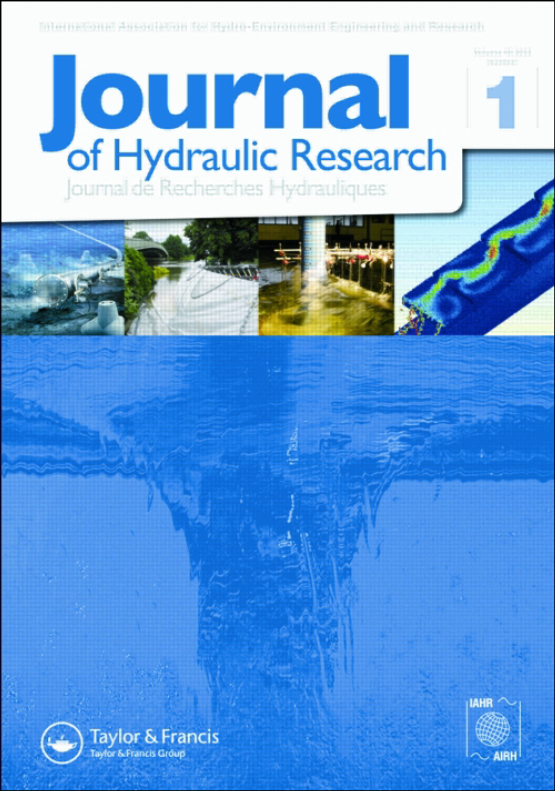Submit a Manuscript to the Journal
Journal of Hydraulic Research
For a Special Issue on
Breaching of Earthen Dam and Dike Structures: Lessons Learned from Recent Field, Laboratory, and Numerical Studies
Manuscript deadline

Special Issue Editor(s)
Professor Sandra Soares-Frazão,
UCLouvain
sandra.soares-frazao@uclouvain.be
Breaching of Earthen Dam and Dike Structures: Lessons Learned from Recent Field, Laboratory, and Numerical Studies

The breaching of earthen dams and dikes occurs throughout the world with a troubling frequency. Recent breaches of large dams in Libya (2023) and Sudan (2024), and of major river dikes in the USA (2019) and Central Europe (2021), have had disastrous humanitarian and societal consequences. The recency and magnitude of these structural failures underscore the need for better understanding of this topic. Improved comprehension of the breaching of earthen embankment dams and dikes is crucial for reducing societal risks and improving safety related to these important hydraulic structures. Fortunately, significant advances have been made in experimental research and numerical modelling of earthen structure breaching in the last decade. These recent advances are the basis for a workshop on dam and dike breach research at the 41st IAHR World Congress in Singapore in 2025.
In connection with this workshop, we are also excited to announce an Article Collection with the Journal of Hydraulic Research on Breaching of Earth Structures: Lessons Learned from Recent Field, Laboratory, and Numerical Studies. The purpose of this Article Collection is to highlight recent research on the breaching of earthen dams and dikes. Articles will be compiled in a select repository within the Journal of Hydraulic Research online platform, for streamlined access to related research.
This Article Collection welcomes submissions from research on homogeneous dams and dikes, zoned dams and dikes that contain an earthen core, dams and dikes that contain an impervious solid core, and other earthen structures. Research is welcome from field experimental campaigns, laboratory experimental campaigns, numerical studies, and other approaches.
Guest Editors:
Professor Sandra Soares-Frazão is full Professor at UCLouvain, FRS-FNRS Honorary Senior Research Associate and member of the Royal Academy of Belgium in the Technology and Society Class. At the Louvain School of Engineering, Sandra Soares-Frazão teaches various courses and projects in hydraulics, open-channel flows and sediment transport. Since 2020, she is vice-dean of the faculty, with the specific mission of integrating transition and sustainable development in the engineering studies.
Sandra Soares-Frazão is member of IAHR since 2003, actively involved in the Fluvial Hydraulics Committee of the association (chairwoman from 2020 to 2023), and member of SHF (Société Hydrotechnique de France).
Her research interests concern fluvial hydraulics, a vast field that focuses on flows in natural watercourses with questions related to the propagation of floods, in natural or urbanized environments, and the transport of sediment that can induce significant morphological changes in these watercourses. She specialized in experimental modelling in the laboratory of idealized situations, representative of real singularities but circumscribed to a well-controlled environment, mainly using non-intrusive measurement techniques. She also develops numerical simulation tools with her team under the form of an open-source project called Watlab (https://sites.uclouvain.be/hydraulics-group/watlab/). Besides these activities, she is also committed to getting involved in activities related to southern countries, which she does through the North-South scientific cooperation network RESCIF or through ARES funded projects with Haiti in particular.
Dr. Sílvia Amaral is an Auxiliary Researcher at the Portuguese National Laboratory for Civil Engineering (LNEC) and Adjunct Professor at the Instituto Superior de Engenharia de Lisboa (ISEL), where she teaches Hydraulics and Water Resources Engineering. With over 18 years of experience, her work focuses on advanced experimental methods and the physical and numerical modelling of hydraulic structures, with particular emphasis on hydrological risk assessment and the analysis of dam and dike failure mechanisms.
She has led and collaborated on several national and international R&D projects, including DikesFPro, where she serves as Principal Investigator. Her research integrates high-resolution laboratory instrumentation and computational simulation to better understand breach formation in cohesive and zoned earthfill structures. Dr. Amaral is also actively engaged in consulting projects related to dam safety and flood risk management.
In recent years, she has contributed extensively to Mozambique, not only through technical consultancy on dam safety and hydraulic studies, but also by supporting capacity building initiatives through Vocational Education and Training (VET) programmes under the EU-funded Vet4Hydro project. She holds a Ph.D. in Civil Engineering from Instituto Superior Técnico and is a member of IAHR, AGU, and APRH, and has served on the leadership of the IAHR Committee on Experimental Methods and Instrumentation between 2021-2023.
Dr. Matthew Halso is a post-doctoral researcher at the ETH Zurich Laboratory of Hydraulics, Hydrology and Glaciology. Matthew researches the failure of homogeneous and zoned earthen embankment dams, through a combination of laboratory experiments and numerical modeling. He developed two new parametric numerical methods for simplified simulation of embankment dam failure. He also works on the development and maintenance of the hydro-morphodynamic modeling software BASEMENT. Matthew holds a Ph.D. in Civil Engineering from ETH Zurich, and Bachelor’s and Master’s degrees in Civil Engineering from the University of Michigan. He is an active member of the Swiss Committee on Dams, as a member of the working group on freeboard and as Vice-President of the Young Professionals group. He previously worked as a civil engineer for the US Army Corps of Engineers in New Orleans, where he performed numerical hydraulic modeling for the city’s new hurricane protection system, and hydrologic modeling for a proposed large flood retention dam.
Submission Instructions
Articles will be guided through the review process by three guest editors, and upon acceptance will be published in JHR and added to the Collection. Submissions to this Article Collection can be made through the regular JHR submission process until 31 December 2025.
See if you are eligible via your institution to publish your article in this collection Open Access without charge. Taylor & Francis, the publisher of JHR, has a growing list of Open Access agreements with institutions and libraries around the world:
https://authorservices.taylorandfrancis.com/choose-open/publishing-open-access/oa-agreements/
